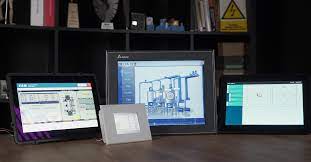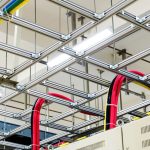Industrial LCD panels play a vital role in industrial automation systems, providing visual interfaces for monitoring and controlling complex processes. Selecting the right industrial LCD panels is crucial to ensure optimal performance, reliability, and longevity in harsh industrial environments. In this article, we will discuss the key factors that you should consider when choosing industrial LCD panels for your industrial automation system.
1. Display Size and Resolution
The display size and resolution of industrial LCD panels are essential considerations. Determine the optimal display size based on the viewing distance and the amount of information you need to display. Higher resolutions provide sharper images and more detailed visuals. Consider the specific requirements of your industrial automation system to determine the ideal display size and resolution that will meet your operational needs.
2. Environmental Durability
Industrial environments are often characterized by harsh conditions, including high temperatures, humidity, dust, and vibrations. It is crucial to select industrial LCD panels that are designed to withstand these challenging conditions. Look for panels with robust construction, sealed bezels, and protection against dust and moisture ingress. Ensure that the panels comply with industry standards for shock and vibration resistance to ensure long-term reliability.
3. Wide Temperature Range
Industrial automation systems often operate in extreme temperature environments, including both high and low-temperature extremes. Industrial LCD panels should be capable of functioning reliably across a wide temperature range. Look for panels with wide temperature specifications, typically ranging from -20°C to 70°C or even higher. This ensures that the panels can operate consistently and without degradation in performance, regardless of the temperature fluctuations in the industrial environment.
4. Sunlight Readability
In outdoor or brightly lit indoor industrial settings, sunlight readability becomes crucial. Industrial LCD panels should feature high brightness levels and anti-glare coatings to ensure optimal visibility even under direct sunlight. Look for panels with high-nit ratings (brightness measurement) and technologies such as LED backlighting to enhance sunlight readability. This ensures that operators can view critical information clearly, minimizing errors and improving overall productivity.
5. Touchscreen Technology
Many industrial LCD panels incorporate touchscreen technology to enable intuitive and efficient interaction with the system. When choosing industrial LCD panels, consider the type of touchscreen technology that best suits your requirements. Capacitive touchscreens offer excellent responsiveness and multi-touch capabilities, while resistive touchscreens are more suitable for environments where operators may be wearing gloves. Select the touchscreen technology that aligns with the specific needs and operational conditions of your industrial automation system.
6. Connectivity Options
Industrial LCD panels should offer a range of connectivity options to integrate with your industrial automation system seamlessly. Look for panels with multiple video input options, such as VGA, HDMI, and DisplayPort, to ensure compatibility with different devices and systems. Additionally, consider the availability of USB ports or other interfaces for connecting peripherals or additional devices, allowing for easy expansion and integration into your existing setup.
7. Longevity and Lifecycle Support
Industrial automation systems often have long lifecycles, and it is important to choose industrial LCD panels that offer long-term availability and support. Ensure that the panels come from reputable manufacturers with a track record of providing ongoing support and availability of spare parts. This ensures that your industrial automation system can be sustained and upgraded over its expected lifespan, minimizing downtime and ensuring compatibility with future system requirements.
8. Certifications and Compliance
When selecting industrial LCD panels, check for relevant certifications and compliance with industry standards. Certifications such as NEMA, IP, and UL ensure that the panels meet specific requirements for environmental protection, electrical safety, and overall reliability. Compliance with industry standards demonstrates the manufacturer’s commitment to producing high-quality and reliable products.
Conclusion
Choosing the right industrial LCD panels for your industrial automation system requires careful consideration of factors such as display size and resolution, environmental durability, wide temperature range, sunlight readability, touchscreen technology, connectivity options, longevity and lifecycle support, and certifications and compliance. By assessing these factors and selecting panels that meet your specific operational requirements, you can ensure optimal performance, reliability, and longevity in your industrial automation system. Invest in high-quality industrial LCD panels to enhance the efficiency, productivity, and overall success of your industrial processes.





